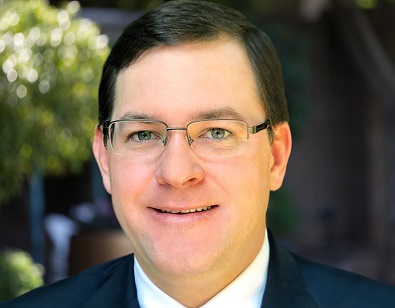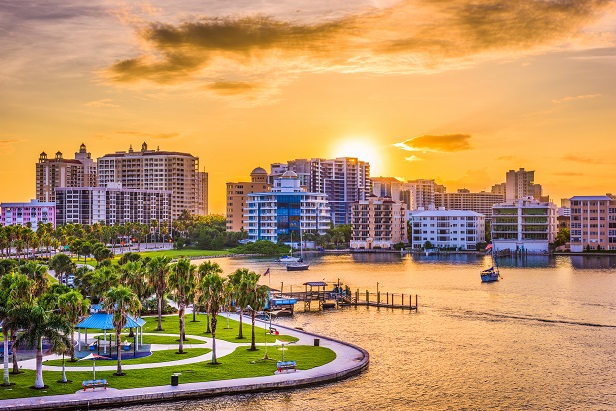GlobeSt.com caught up with SRS Real Estate Partners’ Patrick Nutt and Britt Raymond to find out what is happening with the capital flows into Florida’s single-tenant net lease space. A lot, as it turns out.
What are you seeing in terms of a trend of STNL capital migration to Florida?
Nutt: Florida’s economy and tax-friendly environment has long been a driver for population growth in the state, which has in turn attracted outside investment across all real estate sectors. That said, the enactment of the SALT provisions in the latest tax plan have been a catalyst for investors to re-think where they live and invest, especially those in high tax markets like California and the greater New York City MSA. The movement of investment capital from management-intensive to passive has always been there, but the addition of the tax motivations has added real momentum to the flow.
Raymond: Not only does Florida have the draw of high population growth and income tax free economic incentives, but the retailers perform extremely well there. Retailers are bullish on Florida and therefore they are aggressively expanding across the state. Retailers are signing new leases, which leads to new development and creation of the ideal assets that STNL investors are seeking.
What types of investors make up this buyer profile?
Nutt: The buyers are traditionally private investors undergoing a 1031 exchange, whereby they are selling multifamily or multi-tenant retail buildings in favor of purchasing net lease. Just as the cliché of many a northerner’s plan to “retire and move to Florida,” so many also share the goal of converting properties that have annual issues with tenants, toilets, and turnover to passive and stable properties. We are hitting the point where there is a generation of investors that have amassed significant wealth and are de-risking and simplifying their lives to enjoy retirement, and they’re using net leased properties to do so, and along the way placing these funds into tax-friendly locations near their retirement destinations.
Why do they have an appetite for net lease as opposed to other CRE types?
Nutt: As opposed to multifamily or office products, STNL assets come with little to no landlord responsibilities. For owners that want to enjoy their retirement, STNL assets are a logical fit for trading out of higher maintenance properties. Additionally, investors tend to pursue brands they are familiar with and believe in. For example, Wawa convenience stores are well known across the northeast where they were founded, often having a cult-like following by their customers. They expanded into Florida in 2012, and since that time I have sold 38 different Wawa locations, of which more than 65% of those were sold to investors from the northeast that had a goal of moving their investment dollars into Florida out of NY/NJ area properties.
 Patrick Nutt
Patrick NuttWhat are the benefits to Florida-based retail property investment?
Raymond: Florida creates investor confidence. In addition to the state’s tax benefits, the major metropolitan areas in Florida are well known amongst investors around the world as a safe-haven for their capital. Investors seeking conservative STNL assets benefit from Florida’s high population and economic growth.
Nutt: Investing in net lease is typically a long-term hold strategy. Generally speaking, if you had to guess what state’s economy would fare better over the next 20 years, Florida or Iowa, I don’t believe the results would surprise anyone if Florida won that vote. Florida is growing by over 1,000 residents per day, while New York and Connecticut populations shrunk from 2017-2018. Growing population means more consumers and more demand for real estate, creating long-term appreciation of the underlying dirt beneath a NNN property.
What do you see happening over the next 12 to 24 months in terms of this trend?
Raymond: I foresee more of an increase in capital migration to Florida especially from markets like New York City where extreme rent control regulations and increasing expenses are substantially reducing investors’ profits. The new New York June 2019 rent regulations give renters very low rental increases, safety from eviction and restrictions on security deposits among other things. These restrictions have forced real estate owners to consider diversifying their portfolio into new markets that they trust. Florida is going to be at the top of the list for most of those owners.
 Britt Raymond
Britt RaymondNutt: I expect the volume of investment dollars being moved from the northeast to Florida over the coming 12 to 24 months to remain constant or increase. Now that the rent control regulations have been passed, the investors know the rules of the game for that asset class, and transaction activity should pick up, driving 1031 exchange volume. Adding to that effect will be the recent drop in rates which will help drive pricing for larger assets on the long end of this cycle.
© 2025 ALM Global, LLC, All Rights Reserved. Request academic re-use from www.copyright.com. All other uses, submit a request to [email protected]. For more information visit Asset & Logo Licensing.









